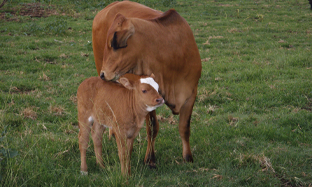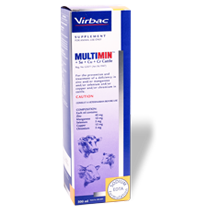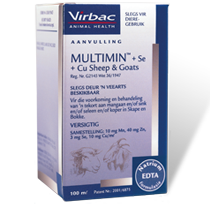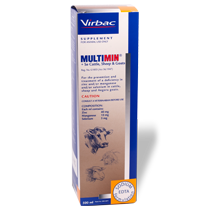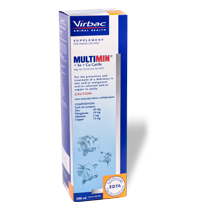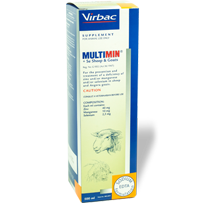
Trace minerals focus on calves, wean time and the replacement heifer
Calves are the farm animals with not only the highest genetic and growth potential, but also the highest feed requirements, as well as exhibiting a lower resistance to parasites, diseases, and stress.
When weaning time is coming up, it is important to ensure that calves’ trace-mineral levels are optimal to reduce weaning shock and its potential negative consequences. Replacement heifers are the next generation of breeding stock on the farm and deserves special attention.
The following illustrates the importance of optimal levels of trace minerals and the factors that influence them, as well how to achieve them:
1. Oxidative stress
A relatively new buzz term in animal health is reactive oxygen species, or ROS. The presence of ROS leads to a condition called oxidative stress. This is a normal process of cell metabolism in the presence of oxygen. ROS leads to the formation of free radicals, which can escalate to above-normal levels when the animal is sick or experiences stress. These free radicals can cause cell death, tissue damage, the formation of malignant cells, or even diseases¹.
Conditions that cause increase cell metabolism, like infections, calving, drought and heat stress, and embryo and foetus development, can lead to an increased risk of oxidative stress and a loss of productivity².
Oxidative stress is not only found in young animals; all animals can be exposed to its negative consequences.
2. The role of antioxidants
The formation of antioxidants is the body’s natural defence mechanism to mitigate or eliminate the effects of oxidative stress and reduce or prevent the formation of free radicals³. Both enzymatic and nonenzymatic antioxidants are required to limit ROS and the formation of free radicals.
2.1 Enzymatic antioxidants:
Trace minerals are required for enzymatic antioxidants to do their job. Copper, manganese, and zinc have been identified as cofactors for the functioning of the various superoxide mutases (enzymes). Selenium, in turn, is a crucial cofactor in the formation of selenoenzymes, of which glutathione peroxidase is the most important⁴.
2.2 Nonenzymatic antioxidants:
Vitamin E and carotene (vitamin A), play important roles as nonenzymatic antioxidants. These vitamins are especially important to support the action of selenium and zinc. Therefore, it is generally recommended to administer vitamins A and E together with the trace-mineral supplements.
3. Trace minerals in calves
Research has proven that, even though calves have adequate levels of trace minerals at birth, these levels drop drastically as a result of their rapid growth and because milk is generally a poor source of trace minerals. The figure below shows how copper and zinc levels drop in calves from birth, reaching suboptimal levels 56 days after birth⁵.
At this time, the calf’s passive immunity, which has so far been transferred to it from its mother through colostrum, starts to decline. This is observed in practice in the increased incidence of diarrhoea and other diseases from an age of 2 to 3 months.
3.1 Signs of an acute deficiency in trace minerals:
- A rough and dull coat
- Short or long lower jaw
- Other bone-structure-related defects
- Poor appetite
- Stunted growth
- Shortened ligaments
By the time an acute deficiency in trace minerals is identified, a lot of invisible damage has already been done in the form of reduced growth and increased susceptibility to diseases. It is therefore unwise to wait for acute symptoms to appear before addressing the problem.
3.2 Subclinical deficiencies:
These are generally either not noticed or incorrectly diagnosed. It can also be seen as an “erosion disease” that “steals” the farmer’s money on a daily basis. Calves do not grow optimally, they get sick more easily, cost more to treat, die before weaning age, and respond poorly to vaccinations, resulting in more vulnerable animals.
Trace-element supplementation early in the calf’s life can contribute significantly to optimal levels of trace minerals and support its immunity status⁶ (Figure below) and growth.
4. Supplementation of trace minerals
It is of the utmost importance that the supplementation method is both accurate and effective. Calves under 3 months old is mostly dependent on the cow’s milk and, as mentioned before, milk is generally a poor source of trace minerals.
4.1 Oral supplementation:
Although the easiest and cheapest, this is often also not the most effective. Young calves do not consume significant amounts of lick. Even if lick blocks do later make up their intake of trace minerals, antagonists like calcium (Ca), iron (Fe), and sulphur (S) will reduce the assimilability of oral trace minerals.
4.2 Injectable trace-mineral supplementation:
This has the advantage of not being influenced by antagonists. It can also be administered in more accurate doses than is possible with oral supplementation, of which intake can vary widely.
An injectable trace-element preparation should meet the following requirements to ensure maximal efficacy:
- It should contain a balanced ratio of trace minerals.
- It should contain adequate levels of trace minerals to actually make a difference.
- The formulation should be tissue-friendly.
- The formulation should be highly bioavailable and ensure maximal assimilation.
- It should be taken up into the bloodstream rapidly, effectively stored in the storage organs (primarily the liver), and later released again when it is needed.
Copper and selenium play important roles in immunity and its development. Calves with optimal copper and selenium levels will display optimal immune response when the first vaccinations take place at 4-5 months of age.
5. Recommended supplementation programme:
Suckling and weaner calves and replacement heifers
In beef-cattle herds, trace-mineral supplementation for calves and replacement heifers using Multimin® is recommended as follows:
- Optional: Week 1 after birth, especially if acute deficiency symptoms or early diarrhoea are present.
- Recommended: At 2 to 3 months of age, when dehorning and deworming, to supplement depleted liver reserves for optimal growth and to assist with immunity development after vaccinations.
- Necessary: 4 weeks before weaning (or at weaning, if doing it earlier is impractical) to ensure that the levels of trace minerals are optimal in order to reduce weaning shock and stimulate immunity.
- Recommended: For replacement heifers, every 4 months after weaning until first mating to ensure optimal growth and development.
Please contact your Virbac Local Representative for an accurate recommendation regarding the correct dosage and use of the product.
References:
¹Lykkesfeldt J, Svendsen O (2007). Oxidants and antioxidants in disease: Oxidative stress in farm animals. Veterinary Journal 173, 502-511.
²Bernabucci U, Ronchi B, Lacetera N, Nardone A (2005). Influence of body condition score on relationships between metabolic status and oxidative stress in periparturient dairy cows. Journal of Diary Science 88, 2017-2026.
³Halliwell B (2007). Biochemistry of oxidative stress. Biochemical Society Transactions 35, 1147-1150.
⁴Michiels C, Raes M, Toussaint O, Remacle J (1994). Importance of SE-glutathione peroxidase, catalase and CU/ZN-SOD for cell survival against oxidative stress. Free Radical Biology and medicine 17, 235-248.
⁵ Branum, Jay Christopher (1999). “Impact of Prenatal Dietary Copper Level on Copper status.” Submitted to the office of graduate studies of Texas A&M University. May 1999.
⁶ Arthington J, Havenga L (2012). Effect of injectable trace minerals on the humoral immune response to multivalent vaccine administration in beef calves. Journal of Animal Science 90, 1966-1971.

